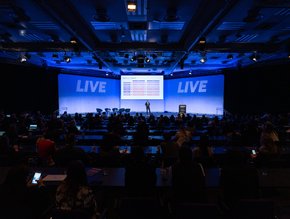CRA: The future of Battery Energy Storage Systems (BESS)

As an associate principal in Charles River Associates (CRA) Energy Practice, Kate Kaplet works with utilities and investors, supporting them to achieve their business goals and help value creation — be it as part of an M&A life cycle, turnaround/transformation efforts, or business strategy development and implementation.
Kaplet has worked on projects in Europe, the Middle East, the US and Singapore. Her focus areas include energy markets, energy trading, sourcing and route-to-market, business strategy and asset optimization, grid O&M transformation including digitalisation and smart grid, and corporate functions (e.g., risk, finance and controlling, and HSE). Prior to joining CRA, she worked for a clean technology startup and major consulting firms including the Boston Consulting Group, gaining over 11 years experience in strategy consulting.
Kaplet is a certified Lean Six Sigma Black Belt. She holds a MSc in Sustainable Urban Development and Planning from The Bartlett, University College London and Bc and Ing arch degrees in Architecture and Urban Planning with additional MLA specialism from The Czech Technical University in Prague.
As one of the authors of CRA’s report on battery storage — Unlocking the potential: Navigating key considerations in battery energy storage systems — she shares some expert insight with Energy Digital.
She is joined by Alpaslan Dilekci, Vice President in CRA’s Energy Practice. He has more than 20 years of energy industry and consulting expertise advising clients from the utilities and renewables sectors.
Mr. Dilekci’s focus has been on the energy transition, including engagements centering around the ramp-up and roll-out of decarbonized and decentralized energy assets and solutions, the wider electric vehicle (EV) ecosystem, as well as engagements focusing on scalable asset-based or digital investments in Europe. His main clients have been at C-level of utilities, renewable energy firms, oil and gas majors, and investment firms. He has expertise working in Germany, Austria, and Switzerland (DACH), the BeNeLux, and has also worked across other European markets.
He has built and led multiple strategy and operations teams for international consulting firms in the EMEA and DACH regions and undertaken complex digital and capital-intense infrastructure projects. Prior to joining CRA, Mr. Dilekci founded and grew two start-ups in Germany focusing on renewable energy solutions and EV-charging infrastructure.
Mr. Dilekci was previously a partner with a consulting firm where he led energy and renewables teams for the German and Swiss market focusing on energy procurement and trading, energy retail and supply, energy market fundamentals, climate risk, and sustainability. He is fluent in English, French, and Turkish and is a native German speaker.
Mr. Dilekci holds a master’s degree in Energy Economics from the University of Aachen and Münster, and a German Diploma in Business Administration and Information Science from the University of Karlsruhe.
What role do Battery Energy Storage Systems (BESS) have in the evolving energy landscape?
With the increasing integration of renewable energy sources and the phase-out of fossil-fuel-powered facilities, the role of battery energy storage systems grows in importance. Storage, when combined with renewable generation, can lead to an increase of the share of renewable energy consumed through its ability to shift the power supply to times when it is most needed. When feeding from the grid and then discharging, it can also provide additional capacity to the power system at times of capacity constraints. Moreover, through a variety of grid services, BESS also helps to balance the grid or maintain its frequency.
As regulators become more familiar and comfortable with BESS through increased experience, additional applications are emerging. BESS can help stabilise the grid (e.g., black start, inertia, or islanding services) or provide services to alleviate grid congestion on the transmission system operator (TSO) level in the form of so-called “grid boosters”. Additionally, BESS can be utilised behind the meter in applications, providing value to industrial and commercial customers (I&C) or to households (in the residential segment).
For I&C, BESS can represent both a source of required power backup and a source of potential additional revenue due to its ability to shift and therefore shape external power demands of the company. A combination of batteries with power generation sources such as solar photovoltaic (PV) offers an attractive option to both I&C and residential customers. Increasingly, BESS can also be leveraged to help cover demand peaks when collocated with electric vehicle (EV) charging stations or to enable connections of new demand sources, under the condition that part of the demand will be “shaved” during peak times. We expect the applications will grow over time, especially in markets that will face increasing grid congestion problems.
The overall policy direction, both on an EU and state level is rather positive. For example, the Electricity Market Reform Proposal mentions the need to boost investment in flexibility and aim to reduce price volatility. There is room for more specific targets both on the EU and state levels, and those targets are emerging. Currently, Spain targets 20 GW and the UK targets 30 GW of storage by 2030. Most targets are technology agnostic, considering not only BESS, but also flywheel, pumped hydro, and liquid air energy storage. The European Association for Storage of Energy (EASE) outlines targets of 200 GW of storage by 2030 and 600 GW by 2050 across the EU.
Investing in energy storage will be essential to reach such targets. Investors are becoming increasingly familiar with BESS as an asset class. To make it truly investable, there is still a need for some level of certainty in terms of capacity support and favourable regulatory environment. Merchant only models are still much harder to finance, given the uncertainties of market price, volatility outlook, and associated trading risks. With the growing understanding of such risks, associated investing models may emerge over time, but it may take a while, especially in an environment with an increased cost of financing.
How can companies maximise earnings through cross-market optimisation strategies and plan for long-term adaptability to changing market conditions while balancing deployment costs with specific use cases to ensure project profitability?
Optimisation begins by combining revenue streams, considering technical feasibility and regulations. Some countries prohibit simultaneous participation in frequency services and balancing or capacity markets. Additionally, commitments to ancillary services could reduce the wholesale market opportunity due to the requirements on state of energy levels. There are also limitations due to the degradation, warranty and insurance conditions, and maintenance cost. On top of that, the cross-market optimisation strategy tends to be dynamic, with the combination of revenue streams differing between time periods and seasonally within the year, and likely changing over the project lifetime as new services emerge, old disappear, and the market develops.
Investors should consider the potential revenue streams and utilisation scenarios already in the design and procurement phase and select a solution that allows for maximum flexibility. This requires an understanding of the market situation and potential scenarios of market developments and what revenue sources can look like in mid and longer-term. Therefore, modelling of scenarios should be used to test optimisation strategies and stress test those to reveal weak spots and the most important sensitivities. This will then need to be translated into project design, agreed warranties and servicing to offer up the most viable investment options.
What is the significance of integrating system augmentation and upgrades into project business cases and considerations for the end-of-life phase in BESS projects?
As with any battery, BESS capacity and efficiency decreases over time as the system ages. In the project planning and design phase, this should be considered upfront, and a decision should be made on how to handle end-of-life.
This decision may shape the initial project design and can influence modifications that will be possible later in the project lifetime. Factors that impact this include:
- Spatial setup and physical footprint
- Impact on upfront investment and potential operating cost implications
- Flexibility to accommodate technology improvements and changes
- Risks linked to the technical feasibility and system compatibility.
Depending on the factors of a specific project, the developer can decide to “overbuild” the system in terms of capacity or both capacity and power or decide to design the project so it can be augmented later, for example with sufficient space and access to perform the works. The actual decision to proceed with augmentation or even repowering should be flexible and driven by the market conditions, not just rely on the performance degradation as a triggering factor.
Investors should periodically reassess technology advancements, cost dynamics, and revenue limitations against revenue opportunities driven by the ever-changing energy market conditions.
*********************************************
For more energy insights check out the latest edition of Energy Digital Magazine and be sure to follow us on LinkedIn & Twitter.
You may also be interested in Sustainability Magazine and EV Magazine.
*********************************************
Net Zero LIVE will be hosted live from the QEII Centre, London on the 6th and 7th of March, and streamed globally via our virtual event platform Brella. Net Zero LIVE London will feature four LIVE themes, incorporating Sustainability LIVE, EV LIVE, Scope 3 LIVE, and Energy LIVE to deliver a holistic conference and exhibition experience with opportunities to connect with like-minded peers and actively contribute to crafting a sustainable future. Following Net Zero LIVE, viewers can also sign up for Sustainability LIVE Dubai and Singapore.
Sign up to the The Global Sustainability & ESG Awards 2024, coming to London on the 11th September 2024.
*********************************************
BizClik is a global provider of B2B digital media platforms that cover Executive Communities for CEOs, CFOs, CMOs, Sustainability Leaders, Procurement & Supply Chain Leaders, Technology & AI Leaders, Cyber Leaders, FinTech & InsurTech Leaders as well as covering industries such as Manufacturing, Mining, Energy, EV, Construction, Healthcare + Food & Drink.
BizClik – based in London, Dubai, and New York – offers services such as Content Creation, Advertising & Sponsorship Solutions, Webinars & Events.






